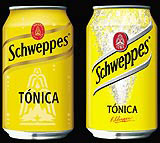International refreshment
As Gordon’s gin and Schweppes tonic relaunch, Hannah Booth and Brandon Cheevers report on how international brands are straddling different markets

The world is shrinking for brands. Consumers want to be able to fetch themselves a G&T safe in the knowledge that a Schweppes tonic and a Gordon’s gin are the same whether they are drunk in the French Alps or on a Spanish beach.
Familiarity can be bred by aligning the look of a product across different markets, even if it can mean changing a well-established brand identity, such as the renaming of Jif to Cif in the UK.
But catering for gaping cultural differences while retaining brand consistency is not easy.
An international brand can be perceived differently by a global audience. A country’s culture, historical perceptions of a brand and even climate all affect the way nations regard different brands.
Cadbury Schweppes is consolidating the branding and packaging of its entire soft drinks portfolio, including Schweppes tonic, across Europe (DW 28 February).
The range is due to launch in Australia in October or November. Down under, Schweppes tonic is consumed without a mixer more often than in colder countries, and people are introduced to it at a much younger age.
And Schweppes lemonade is a cult drink in Australia, competing with soft drinks on its own, rather than just used as a mixer, explains Andrew Eyles, managing partner of Blue Marlin, which is redesigning the entire soft drinks portfolio.
‘Australians, for example, wouldn’t be seen dead drinking ginger ale, but in the US it is a major adult soft drink,’ he says.
The structural packaging of a drinks brand can also be as ingrained into a particular culture as the brand itself.
Schweppes lemonade is traditionally served in a beer-style glass bottle in Australia, and it may prove tricky to persuade Australians to embrace a new-look, unified corporate bottle, says Eyles.
Global consolidation of a brand, particularly one with strong heritage – the first Schweppes company was founded in 1783 – must take into account cultural nuances and that can only be achieved by doing your homework.
‘International brand management is all about immersing yourself in as much information about the product as possible beforehand to discover what it stands for, suggests Eyles.
‘It is at this point that you can draw out the common, consistent brand values that will work in any country or culture,’ he says. ‘Brand essence’ forms the basis of a consolidatory rebranding programme.
In some cases, however, a brand’s raw essence isn’t enough and its international variations are too ingrained to warrant change.
International gin brand Gordon’s, which has just been redesigned for the first time in 60 years, by Design Bridge (DW 28 February), has a different bottle shape, colour and graphics for the UK market.
‘The UK version of Gordon’s historically had the same design as the international market – in yellow and red,’ explains Design Bridge board creative director Graham Shearsby.
‘But to cut costs during the First World War, Gordon’s shifted to green glass and a black and white label because it was cheaper to produce. The international design will stay the same, because it is has brand equity, so will the UK version,’ Shearsby says.
Certainly, not all cultural subtleties can be brushed aside, or companies could be accused of putting profit before customers. In this case, it is local advertising specifically and accurately tailored to a market, rather than subtle changes to packaging, that successfully differentiate a brand in different countries, Eyles says.
‘One country may use sex to win over consumers, but another may simply advertise a drink as a good mixer with alcohol. But the raw brand will look the same wherever,’ he says. This way, a country can even think that an international brand is home-grown.
‘You cannot force a change on a market. Any graphic or structural design changes must be sympathetic with a country’s culture and the brand,’ Eyles says. ‘The danger with a sudden, far-reaching redesign is that a brand can lose customers overnight.’ In cases where a radical overhaul is needed, a gradual approach is required, with an interim design filtered in over a period of time.
Shearsby agrees, suggesting international brands undergoing a revamp should aim to for the middle ground. ‘You can’t do something too leading edge, which might work in the UK, but not in the US, where it’s all about the hard sell,’ he says.
Cost, as Shearsby points out, is one of the driving factors behind consolidation of international packaging.
‘Most brand packaging is harmonised across all markets because it makes sense from a cost perspective,’ Shearsby says. ‘It’s logical that brand owners will want to minimise costs for marketing the product, which you can do if you have got the same pack across all markets.’
Eyles agrees. A consistent international brand identity could save a company around 15-20 per cent by cutting out repackaging and design costs, he suggests.
There are other, non-financial reasons. People are becoming less nationalistic and more global in their outlook, helped by increasingly global advertising and media, as ‘most brand owners want their products recognised the world over’, says Eyles.
Ease of international travel, despite a ‘hopefully temporary’ downturn since 11 September 2001, must add to the clamour for international brands.
Some will mourn the loss of quirky cultural differences in products at the expense of profit-seeking and corporate brand values, but consultancies are reaping the benefits.
-
Post a comment



